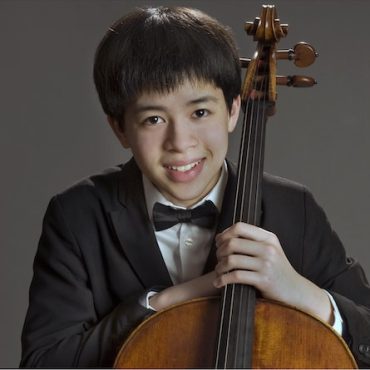
Straight vs. Angled Bowing: A Visual Experiment
Hayden Idson
This past summer, I had the wonderful opportunity to study at the Bowdoin International Music Festival. One of the pieces that I brought to the festival was the Prelude to Bach’s Cello Suite No. 3. The main goal I had for the piece was to sound less “choppy” and play with a smoother legato sound. After trying everything I could think of to solve the problem on my own, I brought the issue to my teacher, Paul Katz, who like a skilled doctor immediately saw what the problem was and fixed it! The problem turned out to be that rather than keeping my bow straight, i.e., perpendicular to the strings, I bowed in a semicircle. As soon as I started to bow in a straight line, I was able to make the sound with my cello that I wanted to.
I was very intrigued by how this change in technique allowed me to play with a smoother legato sound. I wondered if the difference had anything to do with how straight versus angled bowing affects the vibrations in the strings. In an attempt to see the vibrations of a string, as I bowed, I laid my cello flat on my lap with the bridge facing towards the ceiling. I first drew the bow straight across, i.e., perpendicular to the string. Next, I drew the bow at around a 70º angle across the string. I noticed that when I drew the bow straight, the string looked like it was thicker than when I drew the bow at a 70º angle, meaning that the string vibrated more when I bowed straight. If that’s the case, then if I play at an angle near bow changes, the vibrations will decrease toward each bow change, causing a disruption in the sound.
To see the vibration patterns better, I devised an experiment using my backup bow to play on the pull-cord of a curtain that was around 10-15 feet long. The pull cord worked pretty well as a “cello string” and since the string was so long, I could see its vibrations more clearly. I noticed that if I bow in a semi-circle, the vibration of the string decreases towards the bow changes and the string doesn’t start as quickly. Straight bowing produces much more continuous vibrations and allows the string to start more immediately. This confirmed that the choppy sound I disliked when I played Bach was because I didn’t keep my bow straight enough!
Here are two videos that I took to document the experiment. As you can see, on the straight bowing video (Video #1), the vibrations are nearly continuous even through the bow changes. On the angled bowing video (Video #2), the vibrations decrease and stop at the bow changes.
Straight Bowing
Angled Bowing
Subjects: Technique
Tags: bow angle, experiment, legato, student, student reflection, Teaching
